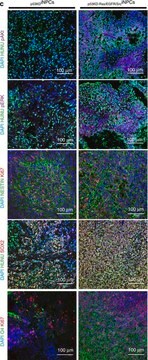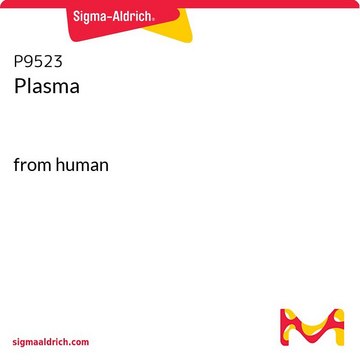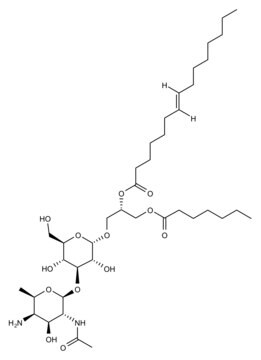MAB5606Z
Anti-GD1a Ganglioside Antibody, clone GD1a-1 (Azide Free)
clone GD1a-1, from mouse
Synonym(s):
GD1a Ganglioside
About This Item
Recommended Products
biological source
mouse
Quality Level
antibody form
purified immunoglobulin
antibody product type
primary antibodies
clone
GD1a-1, monoclonal
species reactivity
bovine, human, fish, mouse, rat
species reactivity (predicted by homology)
vertebrates (based on 100% sequence homology)
technique(s)
ELISA: suitable
immunohistochemistry: suitable (paraffin)
isotype
IgG1κ
shipped in
dry ice
target post-translational modification
unmodified
General description
Specificity
Immunogen
Application
ELISA Analysis: Target specificity of a representative lot was determined by ELISA analysis (Gong, Y., et al. (2002). Brain. 125(Pt 11):2491-2506).
Immunohistochemistry Analysis: A representative lot detected GD1a immunoreactivity in fresh-frozenmid-sagittal brain sections from wild-type and St3gal2/3-double-null mice (Sturgill, E.R., et al. (2012). Glycobiology.22(10):1289-1301).
Immunohistochemistry Analysis: A representative lot detected GD1a immunoreactivity in various fish brain regions using free-floating sections (Viljetić, B., et al. (2012). Biochim Biophys Acta. 1820(9):1437-1443).
Immunohistochemistry Analysis: A representative lot detected GD1a in fresh-frozen human and rat brain sections by both fluorescent and non-fluorescent immunohistochemistry (Gong, Y., et al. (2002). Brain. 125(Pt 11):2491-2506).
Immuno-overlay Assay: A representative lot detected bovine brain GD1a, as well as GD1a in human ventral and dorsal root gangliosides extracts (Gong, Y., et al. (2002). Brain. 125(Pt 11):2491-2506).
Neuroscience
Developmental Neuroscience
Quality
Immunohistochemistry Analysis: A 1:50 dilution of this antibody detected GD1a Ganglioside in human heart tissue.
Linkage
Physical form
Storage and Stability
Handling Recommendations: Upon receipt and prior to removing the cap, centrifuge the vial and gently mix the solution. Aliquot into microcentrifuge tubes and store at -20°C. Avoid repeated freeze/thaw cycles, which may damage IgG and affect product performance.
Other Notes
Disclaimer
Not finding the right product?
Try our Product Selector Tool.
Storage Class Code
12 - Non Combustible Liquids
WGK
WGK 1
Flash Point(F)
Not applicable
Flash Point(C)
Not applicable
Regulatory Listings
Regulatory Listings are mainly provided for chemical products. Only limited information can be provided here for non-chemical products. No entry means none of the components are listed. It is the user’s obligation to ensure the safe and legal use of the product.
JAN Code
MAB5606Z:
Certificates of Analysis (COA)
Search for Certificates of Analysis (COA) by entering the products Lot/Batch Number. Lot and Batch Numbers can be found on a product’s label following the words ‘Lot’ or ‘Batch’.
Already Own This Product?
Find documentation for the products that you have recently purchased in the Document Library.
Our team of scientists has experience in all areas of research including Life Science, Material Science, Chemical Synthesis, Chromatography, Analytical and many others.
Contact Technical Service






